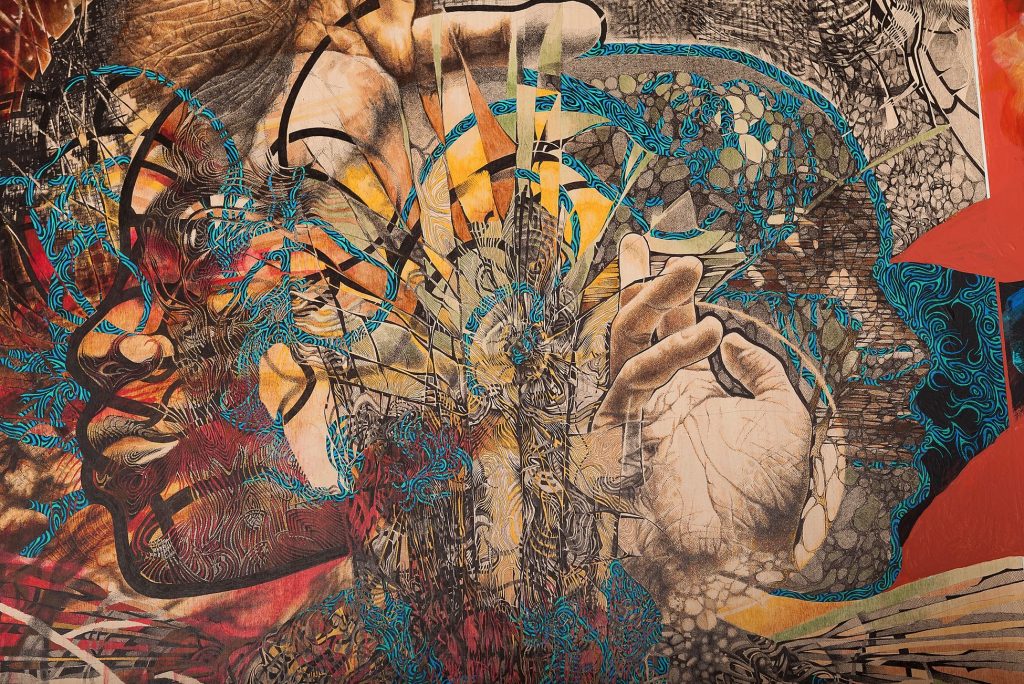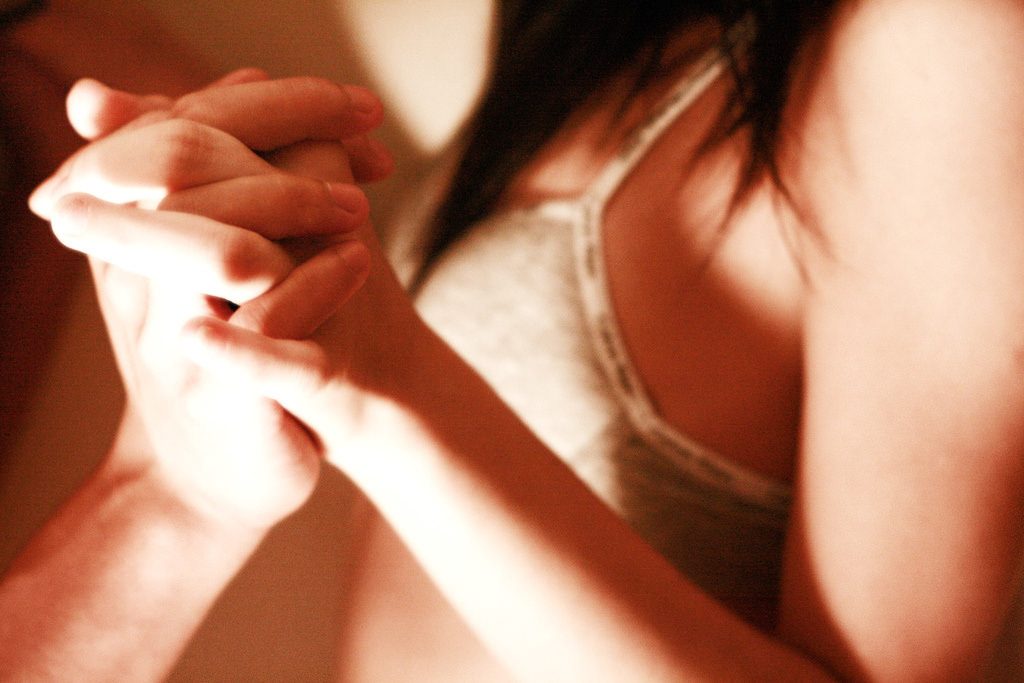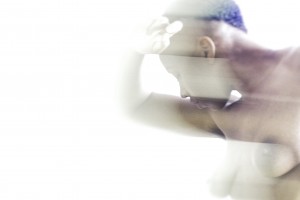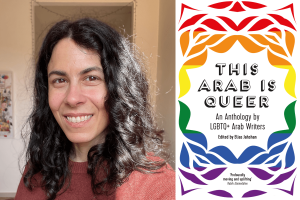Boi wonder: Hinduism, transness and masculine anger
By: Rathini Kandavel

My very first images of masculinity and femininity came from the pictures that hung in my family’s prayer area, inside a small hallway closet with doors that opened like an accordion.
Inside I saw gods and goddesses, either balanced on one leg in a dance pose, or standing with their palms together in prayer. At six years old, I was devout – still too young and innocent to understand the full scope
of Hinduism’s contradictions.
In time, I’d learn about the caste system that toxic masculinity had interpreted into Hinduism. But, as a child, I was in love with the beauty and serenity of these idols and pictures of my parents’ faith.

Hindu imagery often depicts gender non-conformity and transformation in its gods and goddesses. Artwork: NFN Kalyan.
Through these images of Hindu deities, I began to imagine what love and intimacy looked like. The gods and goddesses held their almond-shaped eyes half closed in deep meditation, as though looking lovingly upon me. Their lips were pursed and their smiles made them seem all-knowing.
Their gaze over me gave me such great comfort, just like the folds of my maternal grandmother’s sari and the scent of my mother’s musk. One of my favourite pictures, which I spent countless minutes staring at, is
an image of Krishna and Radha.
The two deities stand in an active pose – Krishna, playing a flute, holds Radha in a loving embrace, their arms and legs entwined around each other.
Both of their bodies stand on two legs, a slight difference in skin tone the only clue I could perceive in trying to figure out whose leg and whose arm belonged to whom.
It was hard for me to distinguish between masculine and feminine energy in this image. For example, Krishna’s hair flows past his ears and down his back, and is equal in length to Radha’s hair. Radha wears a sari and Krishna is shirtless, although both are decked in heavy jewellery, tiered crowns and golden halos.
My grandmother explained to me that together, the deities represent the energy of the divine – that God, in fact, is neither solely masculine nor solely feminine, but both.
In conjunction with the stories from my grandmother’s lips about the Hindu pantheon and their antics, I learned that feminine and masculine divine energy were two sides of the same coin.
While the masculine figures in my life blended together, the feminine figures always stood out. My mother’s feminine energy commanded respect, love and fear simultaneously. She wore a full sari every day, and her anklets gave warning of her mood as she moved through the house, her stride echoing her training as a classical Indian dancer.
My grandmother had a softness about her that was more than just her wrinkled skin. She seemed filled with infinite wisdom and I felt her power in the endless love and compassion she gave me. She never raised her voice and always looked upon me with a smile, and I saw my own gentleness reflected in hers.
My mother and grandmother were the epitome of elegance and power, like the goddesses they worshipped.
Masculine energy, on the other hand, seemed more dopey. I learned that masculine gods granted wishes much more easily than their female counterparts, and accidentally made mistakes that often caused havoc on Earth.
I also learned that masculine and feminine energy often interplayed with each other in Hinduism. Gods were both male and female. There is even a story of a male god that became a female-bodied god, then had sexual intercourse with another male god before giving birth to a healthy, male baby god.
As I listened to my grandmother’s stories, I began to realise that gender is not fixed or predetermined. In this way, Hinduism allowed me to think of gender differently.
This was particularly fascinating for me growing up, because I was also becoming keenly aware that although I was assigned female at birth, I exhibited more male energy than female.
It wasn’t until decades later that I understood myself to be transgender. Despite Hinduism’s lax gender lines, my parents were very strict and conservative. I discovered this pretty early into living under their gendered rules, with statements like, “Close your legs, don’t sit like a boy,” or “You can learn to dance and sing, but girls don’t play the drums.”

Colonisation is largely attributed for having introduced transphobia into the subcontinent. Artwork: NFN Kalyan.
When I tried on my older brother’s clip-on tie, I was careful to do so when no-one was home to find me. Despite my parents’ deep distrust of anything outside their strict idea of gender norms, I was dedicated to living a pious life as a Hindu, in an effort to absolve myself of any guilt I felt for being different.
I studied the tenets of Hinduism through folklore and ancient scriptures, as dictated to me by my mother and grandmother. I came to understand that living life was all about learning and doing your Dharma, or duty, and that any hardships or difficulties I had along the way was my Karma, or fate.
I tried to emulate Rama’s example of righteousness, and Krishna’s gentle love and playfulness, all the while revering the female energy of Amman and her eternal, omniscient power. Although I felt like a boy, I was deeply proud of my feminine body and energy as well.
One day, my childlike curiosity and naivety met my family’s reality head-on. Although I aimed to be virtuous, when I eventually came out about being queer, my parents ultimately refused to accept me for who I was.
This led me to isolate myself from my community, who my parents depended on, and who they felt would shun us all if they found out I was trans. I became distant over the next few years because I was separated from the rituals and culture I loved and had grown up with.
A decade later, I found myself in my mid-30s, living in New York City. I had a stable job that I was deeply unhappy with, and a handful of friends who I was rarely myself around.
In truth, after everything I had been through with my parents since childhood, I barely knew myself at all, but this proximity to ‘normal life’ filled the void left behind by the loss of those familial bonds.
I recall many nights spent sitting on the couch, my eyes on the television, feeling anger and sadness building in my chest and throat. It didn’t matter what was bothering me, the rage inside was familiar, and years of learned survival mechanisms had taught me to keep my anger inside and to slowly implode instead, to mitigate the impact of my rage.
The only thing that would appease the fire inside me was sleep, so I would go to bed angry and when I woke up, I would feel clear and light again. During sleep, my body somehow compressed my anger into a tight place for safe-keeping (probably my lower back, which had been bothering me for years).
In the morning, after a cup of coffee and a glass of water, I might be able to talk about how I felt with greater clarity. Although I was keeping much of my anger inside, it had a way of hurting me and those around me. My sadness left me drained, and my thoughts would turn inward so I felt sorry for myself.
I saw others around me as being free of the things that tormented me, and I envied others as I failed to meet my own expectations of myself. Then, to protect myself, I withdrew from people, and soon felt like I didn’t fit in anywhere.
This is one of the ways men and trans masculine people deal with their anger and frustration. I was unhappy. Like my own father, who became violent and mean to those around him when he had no outlet for his own emotions, the only way I knew how to deal with my feelings was to implode when I felt overwhelmed.
The resulting implosion turned my anger into a more manageable sadness directed towards myself. In this way, I became toxic to myself, and to those around me.
It was at this time that a fellow queer and transgender Tamil-Sri Lankan cousin who I grew up with suggested that I connect with the Brown Boi Project. Although I felt desperately alone, I was hesitant to move forward and, for a while, I didn’t: not knowing was easier than being open to something new.
In time, my desire for something different began to outweigh my fear, and I applied for the project. Within months, I was on my way to Las Vegas for a leadership retreat. At the retreat, I sat in a circle with 15 other masculine-of-centre people of colour, and discussed the intersections of race and gender on our bodies and psyches.
We discussed the impact of our different identities on our lives and survival, and our responsibility to take care of ourselves. Although I had never met anyone in that room before, I felt a deep and acute sense of connection to my cohort.
The experience changed my life. The combination of seeing, and being seen by, others like me made it much easier for me to see who I truly was.
I already knew I was transgender, but the thought of medical transition had always overwhelmed me: too much money, too few resources, and, ultimately, a fear of needles and change. But when I met these other Brown Bois, some of whom were further into their medical transitions and were happy, I realised that transition was what I wanted for myself, and it was my own transphobia that had stopped me.
Together, we were learning that we deserved more than just to survive, we deserved to thrive. During this experience, I also began to unpack the ways I had unknowingly been helping my oppressors with their work, by centring white patriarchy in all that I prescribed to, while devaluing the rich medicine provided to me by my own community and spiritual practices.
As I unpacked this, I learned the depths of my own privilege, and began tapping into my ancestral power. After years spent moving away from my community, the Brown Boi family and my fellow community members reminded me that belonging was very important to my wellbeing. Without roots in a community, I could no longer grow, or even continue standing for much longer.
More importantly, my cohort reminded me that my community was not only the one that I was born into. Other black and brown, genderqueer, social justice-minded people were also my community.
After those five days, the impact was immediate and powerful. I committed to taking care of myself so I could help and support others. I felt love, power and joy, although I knew there was still a lot of work to be done.
When I came back from Vegas, I reached out to as many local Brown Bois as I could find on Facebook.
I met some of them for coffee, and we’d talk for hours; others I met in passing, at various community events throughout the year.
I felt much more empowered and comfortable with who I was after my experience with the Brown Boi Project, and now that I knew what community could feel and look like, the rest of my daily life stood in stark contrast to the love and energy that I felt from other Brown Bois.
Now, I do my best to bring the same love and energy I felt at the retreat to new spaces and new people.
Masculinity is a privilege and I now believe that I am responsible for it. I know I still have a lot of healing to do, but I also know I’m not faultless and I sometimes make mistakes.
I learned from the Brown Boi Project that masculinity is not inherently toxic. As part of a larger system of patriarchy and oppression, masculinity is corrosive and fragile. I have to check my behaviour all the time to ensure that I’m not being toxic. It’s constant work and it always will be.
I’m grateful for the community I’ve chosen for myself. To be seen for who I truly am is a powerful experience. I want to hold those who display toxic masculinity accountable, because, as a masculine person, I believe I have that responsibility.
I also have to believe that people are allowed to make mistakes. If, after a mistake, even after being violent, a person commits to learning from their mistake and doing better, then I also have the power to forgive.
Now, when I think of the beauty in masculinity, I think back to the cool, calm eyes of Hindu gods like Ganesha and Krishna.
Like femininity, there’s power in masculinity. Like the tales I learned from my grandmother, we are nothing without both.
Rathini Kandavel is a Tamil-Sri Lankan-American, queer transgender educator and writer who is thoughtful, deliberate, and extremely cautious. Born and raised in a large Tamil-Sri Lankan community just outside of Los Angeles, Rathini now lives in New York City.












